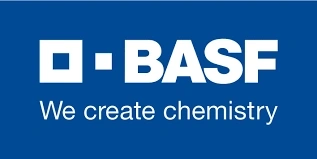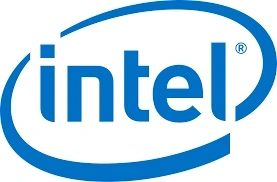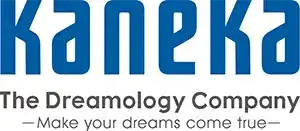Report Details
Not found what are you looking for

Automobile and Transportation
Global Autonomous Vehicles Market Research Report 2023(Status and Outlook)
Description
ToC
Tables & Figures
Companies
Speak with Analyst
Report Overview:
The global autonomous vehicles market size was USD 35559.07 million in 2021 and is expected to register a robust revenue CAGR of 23.50% during the forecast period. Key factors such as rapidly expanding automotive sector, increasing demand for efficient, convenient, and safe driving experience, and growing adoption of electric vehicles are expected to drive global market growth during the forecast period.
Over years, there have been rapid advancements in the automotive sector as manufacturers are constantly launching novel and innovative products and modifications to cater to changing trends and consumer demands. One of the latest and most interesting additions to the automotive industry is the autonomous vehicle or driverless cars. These cars are capable of operating itself and performing necessary functions without human intervention.
Autonomous cars use a combination of sensors, radar, cameras, and AI to travel between destinations. These cars are developed using huge amounts of data from image recognition systems and machine learning in order to drive autonomously. The adoption of autonomous vehicles has significantly increased in recent times owing to increasing awareness about its benefits such as enhanced safety and security, secured mobility for disabled individuals and non-drivers, and reduced risks of road accidents and crashes.
Factors such as rising advancements in Advanced Driver Assistance Systems (ADAS), increasing awareness about reducing environmental impact, growing preference for robot taxis, and rising investments in developing more enhanced models are expected to drive global market growth during the forecast period. In addition, increasing funds by public and private sectors is expected to drive overall market growth going ahead.
However, factors such as high manufacturing costs, challenges associated with data management, low purchasing power & adoption of autonomous cars, and lack of adequate infrastructure in emerging countries are expected to hamper global autonomous vehicles market growth during the forecast period.
Electric Vehicle Segment to Register Rapid Revenue CAGR:
The electric vehicle segment is expected to register rapid revenue CAGR between 2023 and 2028 owing to growing need for safe and efficient driving systems, increasing awareness about environmental concerns caused by conventional vehicles, rising purchasing capacity, and increasing overall sales of electric autonomous vehicles.
Passenger Car Segment to Account for a Significantly Larger Revenue Share:
The passenger car segment is expected to account for a significantly larger revenue share over the forecast period. This can be attributed to increasing spending capacity, rising trends of car ownership, and rising launches of hybrid and electric autonomous vehicles.
North America to Lead in Terms of Revenue Share:
North America is expected to account for largest revenue share in the global market during the forecast period owing to rapidly expanding automotive sector in the region, high disposable income, stringent safety regulations in the region, and presence of leading players. In addition, rising demand for autonomous vehicles due to rising awareness about its benefits over conventional vehicles and high focus on road and driving safety are other factors expected to boost revenue growth in North America going ahead.
Autonomous Vehicles Industry Recent Developments:
In April 2022, Ola Electric announced its plans to launch autonomous car in the next two years. The testing of the car has already begun.
In January 2023, Apple announced its vehicle project to build a fully autonomous vehicle by 2026.
Key Company
•Alphabet
•BMW
•Tesla
•BYD
•Ford Motor
•Daimler
•Waymo
Market Segmentation (by Type)
•Conventional
•Hybrid Vehicle
•Electric Vehicle
Market Segmentation (by Application)
•Passenger Car
•Commercial Vehicle
Geographic Segmentation
• North America (USA, Canada, Mexico)
• Europe (Germany, UK, France, Russia, Italy, Rest of Europe)
• Asia-Pacific (China, Japan, South Korea, India, Southeast Asia, Rest of Asia-Pacific)
• South America (Brazil, Argentina, Columbia, Rest of South America)
• The Middle East and Africa (Saudi Arabia, UAE, Egypt, Nigeria, South Africa, Rest of MEA)
Key Benefits:
Industry Drivers, Restraints, And Opportunities Covered In The Report
Market Structure and Projections for The Coming Years
Neutral Perspective on The Market Performance
Recent Trends and Developments in The Industry
Competitive Landscape and Strategies Used By Market Players
Potential And Niche Segments and Key Regions Exhibiting Promising Growth
Historical, Current and Projected Market Size
Key Questions Addressed:
Which key players are leading in the global autonomous vehicles market?
What is the expected market size of the global autonomous vehicles market between 2023 and 2028?
What factors are expected to open new growth avenues and opportunities for existing and emerging market players?
What are some of the key challenges that the global market is expected to face during the forecast period?
Which region is expected to account for largest revenue share over the forecast period?
Customization of the Report
In case of any queries or customization requirements, please connect with our sales team, who will ensure that your requirements are met.
Note: this report may need to undergo a final check or review and this could take about 48 hours.
Chapter Outline:
Chapter 1 mainly introduces the statistical scope of the report, market division standards, and market research methods.
Chapter 2 is an executive summary of different market segments (by region, product type, application, etc), including the market size of each market segment, future development potential, and so on. It offers a high-level view of the current state of the Autonomous Vehicles Market and its likely evolution in the short to mid-term, and long term.
Chapter 3 makes a detailed analysis of the Market's Competitive Landscape of the market and provides the market share, capacity, output, price, latest development plan, merger, and acquisition information of the main manufacturers in the market.
Chapter 4 is the analysis of the whole market industrial chain, including the upstream and downstream of the industry, as well as Porter's five forces analysis.
Chapter 5 introduces the latest developments of the market, the driving factors and restrictive factors of the market, the challenges and risks faced by manufacturers in the industry, and the analysis of relevant policies in the industry.
Chapter 6 provides the analysis of various market segments according to product types, covering the market size and development potential of each market segment, to help readers find the blue ocean market in different market segments.
Chapter 7 provides the analysis of various market segments according to application, covering the market size and development potential of each market segment, to help readers find the blue ocean market in different downstream markets.
Chapter 8 provides a quantitative analysis of the market size and development potential of each region and its main countries and introduces the market development, future development prospects, market space, and capacity of each country in the world.
Chapter 9 introduces the basic situation of the main companies in the market in detail, including product sales revenue, sales volume, price, gross profit margin, market share, product introduction, recent development, etc.
Chapter 10 provides a quantitative analysis of the market size and development potential of each region in the next five years.
Chapter 11 provides a quantitative analysis of the market size and development potential of each market segment (product type and application) in the next five years.
Chapter 12 is the main points and conclusions of the report.
FAQ
- You should buy this report from Xcellent Insights for a better clarity on market scenarios.
- The market report has been prepared using a pragmatic approach to suit your needs.
- We have an extensive library of reports that can help you understand the market landscape and make informed decisions about your business.
- Additionally, the reports are written by experienced analysts who have a deep understanding of the market and the latest trends.
- Besides, customization is a value-added service if you decide to opt.
Table of Content
1 Research Methodology and Statistical Scope
1.1 Market Definition and Statistical Scope of Autonomous Vehicles
1.2 Key Market Segments
1.2.1 Autonomous Vehicles Segment by Type
1.2.2 Autonomous Vehicles Segment by Application
1.3 Methodology & Sources of Information
1.3.1 Research Methodology
1.3.2 Research Process
1.3.3 Market Breakdown and Data Triangulation
1.3.4 Base Year
1.3.5 Report Assumptions & Caveats
2 Autonomous Vehicles Market Overview
2.1 Global Market Overview
2.1.1 Global Autonomous Vehicles Market Size (M USD) Estimates and Forecasts (2018-2028)
2.1.2 Global Autonomous Vehicles Sales Estimates and Forecasts (2018-2028)
2.2 Market Segment Executive Summary
2.3 Global Market Size by Region
3 Autonomous Vehicles Market Competitive Landscape
3.1 Global Autonomous Vehicles Sales by Manufacturers (2018-2023)
3.2 Global Autonomous Vehicles Revenue Market Share by Manufacturers (2018-2023)
3.3 Autonomous Vehicles Market Share by Company Type (Tier 1, Tier 2, and Tier 3)
3.4 Global Autonomous Vehicles Average Price by Manufacturers (2018-2023)
3.5 Manufacturers Autonomous Vehicles Sales Sites, Area Served, Product Type
3.6 Autonomous Vehicles Market Competitive Situation and Trends
3.6.1 Autonomous Vehicles Market Concentration Rate
3.6.2 Global 5 and 10 Largest Autonomous Vehicles Players Market Share by Revenue
3.6.3 Mergers & Acquisitions, Expansion
4 Autonomous Vehicles Industry Chain Analysis
4.1 Autonomous Vehicles Industry Chain Analysis
4.2 Market Overview and Market Concentration Analysis of Key Raw Materials
4.3 Midstream Market Analysis
4.4 Downstream Customer Analysis
5 The Development and Dynamics of Autonomous Vehicles Market
5.1 Key Development Trends
5.2 Driving Factors
5.3 Market Challenges
5.4 Market Restraints
5.5 Industry News
5.5.1 New Product Developments
5.5.2 Mergers & Acquisitions
5.5.3 Expansions
5.5.4 Collaboration/Supply Contracts
5.6 Industry Policies
6 Autonomous Vehicles Market Segmentation by Type
6.1 Evaluation Matrix of Segment Market Development Potential (Type)
6.2 Global Autonomous Vehicles Sales Market Share by Type (2018-2023)
6.3 Global Autonomous Vehicles Market Size Market Share by Type (2018-2023)
6.4 Global Autonomous Vehicles Price by Type (2018-2023)
7 Autonomous Vehicles Market Segmentation by Application
7.1 Evaluation Matrix of Segment Market Development Potential (Application)
7.2 Global Autonomous Vehicles Market Sales by Application (2018-2023)
7.3 Global Autonomous Vehicles Market Size (M USD) by Application (2018-2023)
7.4 Global Autonomous Vehicles Sales Growth Rate by Application (2018-2023)
8 Autonomous Vehicles Market Segmentation by Region
8.1 Global Autonomous Vehicles Sales by Region
8.1.1 Global Autonomous Vehicles Sales by Region
8.1.2 Global Autonomous Vehicles Sales Market Share by Region
8.2 North America
8.2.1 North America Autonomous Vehicles Sales by Country
8.2.2 U.S.
8.2.3 Canada
8.2.4 Mexico
8.3 Europe
8.3.1 Europe Autonomous Vehicles Sales by Country
8.3.2 Germany
8.3.3 France
8.3.4 U.K.
8.3.5 Italy
8.3.6 Russia
8.4 Asia Pacific
8.4.1 Asia Pacific Autonomous Vehicles Sales by Region
8.4.2 China
8.4.3 Japan
8.4.4 South Korea
8.4.5 India
8.4.6 Southeast Asia
8.5 South America
8.5.1 South America Autonomous Vehicles Sales by Country
8.5.2 Brazil
8.5.3 Argentina
8.5.4 Columbia
8.6 Middle East and Africa
8.6.1 Middle East and Africa Autonomous Vehicles Sales by Region
8.6.2 Saudi Arabia
8.6.3 UAE
8.6.4 Egypt
8.6.5 Nigeria
8.6.6 South Africa
9 Key Companies Profiled
9.1 Alphabet
9.1.1 Alphabet Autonomous Vehicles Basic Information
9.1.2 Alphabet Autonomous Vehicles Product Overview
9.1.3 Alphabet Autonomous Vehicles Product Market Performance
9.1.4 Alphabet Business Overview
9.1.5 Alphabet Autonomous Vehicles SWOT Analysis
9.1.6 Alphabet Recent Developments
9.2 BMW
9.2.1 BMW Autonomous Vehicles Basic Information
9.2.2 BMW Autonomous Vehicles Product Overview
9.2.3 BMW Autonomous Vehicles Product Market Performance
9.2.4 BMW Business Overview
9.2.5 BMW Autonomous Vehicles SWOT Analysis
9.2.6 BMW Recent Developments
9.3 Tesla
9.3.1 Tesla Autonomous Vehicles Basic Information
9.3.2 Tesla Autonomous Vehicles Product Overview
9.3.3 Tesla Autonomous Vehicles Product Market Performance
9.3.4 Tesla Business Overview
9.3.5 Tesla Autonomous Vehicles SWOT Analysis
9.3.6 Tesla Recent Developments
9.4 BYD
9.4.1 BYD Autonomous Vehicles Basic Information
9.4.2 BYD Autonomous Vehicles Product Overview
9.4.3 BYD Autonomous Vehicles Product Market Performance
9.4.4 BYD Business Overview
9.4.5 BYD Autonomous Vehicles SWOT Analysis
9.4.6 BYD Recent Developments
9.5 Ford Motor
9.5.1 Ford Motor Autonomous Vehicles Basic Information
9.5.2 Ford Motor Autonomous Vehicles Product Overview
9.5.3 Ford Motor Autonomous Vehicles Product Market Performance
9.5.4 Ford Motor Business Overview
9.5.5 Ford Motor Autonomous Vehicles SWOT Analysis
9.5.6 Ford Motor Recent Developments
9.6 Daimler
9.6.1 Daimler Autonomous Vehicles Basic Information
9.6.2 Daimler Autonomous Vehicles Product Overview
9.6.3 Daimler Autonomous Vehicles Product Market Performance
9.6.4 Daimler Business Overview
9.6.5 Daimler Recent Developments
9.7 Waymo
9.7.1 Waymo Autonomous Vehicles Basic Information
9.7.2 Waymo Autonomous Vehicles Product Overview
9.7.3 Waymo Autonomous Vehicles Product Market Performance
9.7.4 Waymo Business Overview
9.7.5 Waymo Recent Developments
10 Autonomous Vehicles Market Forecast by Region
10.1 Global Autonomous Vehicles Market Size Forecast
10.2 Global Autonomous Vehicles Market Forecast by Region
10.2.1 North America Market Size Forecast by Country
10.2.2 Europe Autonomous Vehicles Market Size Forecast by Country
10.2.3 Asia Pacific Autonomous Vehicles Market Size Forecast by Region
10.2.4 South America Autonomous Vehicles Market Size Forecast by Country
10.2.5 Middle East and Africa Forecasted Consumption of Autonomous Vehicles by Country
11 Forecast Market by Type and by Application (2023-2028)
11.1 Global Autonomous Vehicles Market Forecast by Type (2023-2028)
11.1.1 Global Forecasted Sales of Autonomous Vehicles by Type (2023-2028)
11.1.2 Global Autonomous Vehicles Market Size Forecast by Type (2023-2028)
11.1.3 Global Forecasted Price of Autonomous Vehicles by Type (2023-2028)
11.2 Global Autonomous Vehicles Market Forecast by Application (2023-2028)
11.2.1 Global Autonomous Vehicles Sales (K Units) Forecast by Application
11.2.2 Global Autonomous Vehicles Market Size (M USD) Forecast by Application (2023-2028)
12 Conclusion and Key Findings
Tables and Figures
LIST OF TABLES
Table 1. Introduction of the Type
Table 2. Introduction of the Application
Table 3. Market Size (M USD) Segment Executive Summary
Table 4. Autonomous Vehicles Market Size (M USD) Comparison by Region (M USD)
Table 5. Global Autonomous Vehicles Sales (K Units) by Manufacturers (2018-2023)
Table 6. Global Autonomous Vehicles Sales Market Share by Manufacturers (2018-2023)
Table 7. Global Autonomous Vehicles Revenue (M USD) by Manufacturers (2018-2023)
Table 8. Global Autonomous Vehicles Revenue Share by Manufacturers (2018-2023)
Table 9. Company Type (Tier 1, Tier 2, and Tier 3) & (based on the Revenue in Autonomous Vehicles as of 2021)
Table 10. Global Market Autonomous Vehicles Average Price (USD/Unit) of Key Manufacturers (2018-2023)
Table 11. Manufacturers Autonomous Vehicles Sales Sites and Area Served
Table 12. Manufacturers Autonomous Vehicles Product Type
Table 13. Global Autonomous Vehicles Manufacturers Market Concentration Ratio (CR5 and HHI)
Table 14. Mergers & Acquisitions, Expansion Plans
Table 15. Industry Chain Map of Autonomous Vehicles
Table 16. Raw Materials
Table 17. Midstream Market Analysis
Table 18. Downstream Customer Analysis
Table 19. Key Development Trends
Table 20. Driving Factors
Table 21. Autonomous Vehicles Market Challenges
Table 22. Market Restraints
Table 23. Global Autonomous Vehicles Sales by Type (K Units)
Table 24. Global Autonomous Vehicles Market Size by Type (M USD)
Table 25. Global Autonomous Vehicles Sales (K Units) by Type (2018-2023)
Table 26. Global Autonomous Vehicles Sales Market Share by Type (2018-2023)
Table 27. Global Autonomous Vehicles Market Size (M USD) by Type (2018-2023)
Table 28. Global Autonomous Vehicles Market Size Share by Type (2018-2023)
Table 29. Global Autonomous Vehicles Price (USD/Unit) by Type (2018-2023)
Table 30. Global Autonomous Vehicles Sales (K Units) by Application
Table 31. Global Autonomous Vehicles Market Size by Application
Table 32. Global Autonomous Vehicles Sales by Application (2018-2023) & (K Units)
Table 33. Global Autonomous Vehicles Sales Market Share by Application (2018-2023)
Table 34. Global Autonomous Vehicles Sales by Application (2018-2023) & (M USD)
Table 35. Global Autonomous Vehicles Market Share by Application (2018-2023)
Table 36. Global Autonomous Vehicles Sales Growth Rate by Application (2018-2023)
Table 37. Global Autonomous Vehicles Sales by Region (2018-2023) & (K Units)
Table 38. Global Autonomous Vehicles Sales Market Share by Region (2018-2023)
Table 39. North America Autonomous Vehicles Sales by Country (2018-2023) & (K Units)
Table 40. Europe Autonomous Vehicles Sales by Country (2018-2023) & (K Units)
Table 41. Asia Pacific Autonomous Vehicles Sales by Region (2018-2023) & (K Units)
Table 42. South America Autonomous Vehicles Sales by Country (2018-2023) & (K Units)
Table 43. Middle East and Africa Autonomous Vehicles Sales by Region (2018-2023) & (K Units)
Table 44. Alphabet Autonomous Vehicles Basic Information
Table 45. Alphabet Autonomous Vehicles Product Overview
Table 46. Alphabet Autonomous Vehicles Sales (K Units), Market Size (M USD), Price (USD/Unit) and Gross Margin (2018-2023)
Table 47. Alphabet Business Overview
Table 48. Alphabet Autonomous Vehicles SWOT Analysis
Table 49. Alphabet Recent Developments
Table 50. BMW Autonomous Vehicles Basic Information
Table 51. BMW Autonomous Vehicles Product Overview
Table 52. BMW Autonomous Vehicles Sales (K Units), Market Size (M USD), Price (USD/Unit) and Gross Margin (2018-2023)
Table 53. BMW Business Overview
Table 54. BMW Autonomous Vehicles SWOT Analysis
Table 55. BMW Recent Developments
Table 56. Tesla Autonomous Vehicles Basic Information
Table 57. Tesla Autonomous Vehicles Product Overview
Table 58. Tesla Autonomous Vehicles Sales (K Units), Market Size (M USD), Price (USD/Unit) and Gross Margin (2018-2023)
Table 59. Tesla Business Overview
Table 60. Tesla Autonomous Vehicles SWOT Analysis
Table 61. Tesla Recent Developments
Table 62. BYD Autonomous Vehicles Basic Information
Table 63. BYD Autonomous Vehicles Product Overview
Table 64. BYD Autonomous Vehicles Sales (K Units), Market Size (M USD), Price (USD/Unit) and Gross Margin (2018-2023)
Table 65. BYD Business Overview
Table 66. BYD Autonomous Vehicles SWOT Analysis
Table 67. BYD Recent Developments
Table 68. Ford Motor Autonomous Vehicles Basic Information
Table 69. Ford Motor Autonomous Vehicles Product Overview
Table 70. Ford Motor Autonomous Vehicles Sales (K Units), Market Size (M USD), Price (USD/Unit) and Gross Margin (2018-2023)
Table 71. Ford Motor Business Overview
Table 72. Ford Motor Autonomous Vehicles SWOT Analysis
Table 73. Ford Motor Recent Developments
Table 74. Daimler Autonomous Vehicles Basic Information
Table 75. Daimler Autonomous Vehicles Product Overview
Table 76. Daimler Autonomous Vehicles Sales (K Units), Market Size (M USD), Price (USD/Unit) and Gross Margin (2018-2023)
Table 77. Daimler Business Overview
Table 78. Daimler Recent Developments
Table 79. Waymo Autonomous Vehicles Basic Information
Table 80. Waymo Autonomous Vehicles Product Overview
Table 81. Waymo Autonomous Vehicles Sales (K Units), Market Size (M USD), Price (USD/Unit) and Gross Margin (2018-2023)
Table 82. Waymo Business Overview
Table 83. Waymo Recent Developments
Table 84. Global Autonomous Vehicles Sales Forecast by Region (K Units)
Table 85. Global Autonomous Vehicles Market Size Forecast by Region (M USD)
Table 86. North America Autonomous Vehicles Sales Forecast by Country (2023-2028) & (K Units)
Table 87. North America Autonomous Vehicles Market Size Forecast by Country (2023-2028) & (M USD)
Table 88. Europe Autonomous Vehicles Sales Forecast by Country (2023-2028) & (K Units)
Table 89. Europe Autonomous Vehicles Market Size Forecast by Country (2023-2028) & (M USD)
Table 90. Asia Pacific Autonomous Vehicles Sales Forecast by Region (2023-2028) & (K Units)
Table 91. Asia Pacific Autonomous Vehicles Market Size Forecast by Region (2023-2028) & (M USD)
Table 92. South America Autonomous Vehicles Sales Forecast by Country (2023-2028) & (K Units)
Table 93. South America Autonomous Vehicles Market Size Forecast by Country (2023-2028) & (M USD)
Table 94. Middle East and Africa Autonomous Vehicles Consumption Forecast by Country (2023-2028) & (Units)
Table 95. Middle East and Africa Autonomous Vehicles Market Size Forecast by Country (2023-2028) & (M USD)
Table 96. Global Autonomous Vehicles Sales Forecast by Type (2023-2028) & (K Units)
Table 97. Global Autonomous Vehicles Market Size Forecast by Type (2023-2028) & (M USD)
Table 98. Global Autonomous Vehicles Price Forecast by Type (2023-2028) & (USD/Unit)
Table 99. Global Autonomous Vehicles Sales (K Units) Forecast by Application (2023-2028)
Table 100. Global Autonomous Vehicles Market Size Forecast by Application (2023-2028) & (M USD)
LIST OF FIGURES
Figure 1. Product Picture of Autonomous Vehicles
Figure 2. Data Triangulation
Figure 3. Key Caveats
Figure 4. Global Autonomous Vehicles Market Size (M USD), 2018-2028
Figure 5. Global Autonomous Vehicles Market Size (M USD) (2018-2028)
Figure 6. Global Autonomous Vehicles Sales (K Units) & (2018-2028)
Figure 7. Evaluation Matrix of Segment Market Development Potential (Type)
Figure 8. Evaluation Matrix of Segment Market Development Potential (Application)
Figure 9. Evaluation Matrix of Regional Market Development Potential
Figure 10. Autonomous Vehicles Market Size (M USD) by Country (M USD)
Figure 11. Autonomous Vehicles Sales Share by Manufacturers in 2020
Figure 12. Global Autonomous Vehicles Revenue Share by Manufacturers in 2020
Figure 13. Autonomous Vehicles Market Share by Company Type (Tier 1, Tier 2 and Tier 3): 2017 VS 2021
Figure 14. Global Market Autonomous Vehicles Average Price (USD/Unit) of Key Manufacturers in 2020
Figure 15. The Global 5 and 10 Largest Players: Market Share by Autonomous Vehicles Revenue in 2021
Figure 16. Evaluation Matrix of Segment Market Development Potential (Type)
Figure 17. Global Autonomous Vehicles Market Share by Type
Figure 18. Sales Market Share of Autonomous Vehicles by Type (2018-2023)
Figure 19. Sales Market Share of Autonomous Vehicles by Type in 2021
Figure 20. Market Size Share of Autonomous Vehicles by Type (2018-2023)
Figure 21. Market Size Market Share of Autonomous Vehicles by Type in 2020
Figure 22. Evaluation Matrix of Segment Market Development Potential (Application)
Figure 23. Global Autonomous Vehicles Market Share by Application
Figure 24. Global Autonomous Vehicles Sales Market Share by Application (2018-2023)
Figure 25. Global Autonomous Vehicles Sales Market Share by Application in 2021
Figure 26. Global Autonomous Vehicles Market Share by Application (2018-2023)
Figure 27. Global Autonomous Vehicles Market Share by Application in 2020
Figure 28. Global Autonomous Vehicles Sales Growth Rate by Application (2018-2023)
Figure 29. Global Autonomous Vehicles Sales Market Share by Region (2018-2023)
Figure 30. North America Autonomous Vehicles Sales and Growth Rate (2018-2023) & (K Units)
Figure 31. North America Autonomous Vehicles Sales Market Share by Country in 2020
Figure 32. U.S. Autonomous Vehicles Sales and Growth Rate (2018-2023) & (K Units)
Figure 33. Canada Autonomous Vehicles Sales (K Units) and Growth Rate (2018-2023)
Figure 34. Mexico Autonomous Vehicles Sales (Units) and Growth Rate (2018-2023)
Figure 35. Europe Autonomous Vehicles Sales and Growth Rate (2018-2023) & (K Units)
Figure 36. Europe Autonomous Vehicles Sales Market Share by Country in 2020
Figure 37. Germany Autonomous Vehicles Sales and Growth Rate (2018-2023) & (K Units)
Figure 38. France Autonomous Vehicles Sales and Growth Rate (2018-2023) & (K Units)
Figure 39. U.K. Autonomous Vehicles Sales and Growth Rate (2018-2023) & (K Units)
Figure 40. Italy Autonomous Vehicles Sales and Growth Rate (2018-2023) & (K Units)
Figure 41. Russia Autonomous Vehicles Sales and Growth Rate (2018-2023) & (K Units)
Figure 42. Asia Pacific Autonomous Vehicles Sales and Growth Rate (K Units)
Figure 43. Asia Pacific Autonomous Vehicles Sales Market Share by Region in 2020
Figure 44. China Autonomous Vehicles Sales and Growth Rate (2018-2023) & (K Units)
Figure 45. Japan Autonomous Vehicles Sales and Growth Rate (2018-2023) & (K Units)
Figure 46. South Korea Autonomous Vehicles Sales and Growth Rate (2018-2023) & (K Units)
Figure 47. India Autonomous Vehicles Sales and Growth Rate (2018-2023) & (K Units)
Figure 48. Southeast Asia Autonomous Vehicles Sales and Growth Rate (2018-2023) & (K Units)
Figure 49. South America Autonomous Vehicles Sales and Growth Rate (K Units)
Figure 50. South America Autonomous Vehicles Sales Market Share by Country in 2020
Figure 51. Brazil Autonomous Vehicles Sales and Growth Rate (2018-2023) & (K Units)
Figure 52. Argentina Autonomous Vehicles Sales and Growth Rate (2018-2023) & (K Units)
Figure 53. Columbia Autonomous Vehicles Sales and Growth Rate (2018-2023) & (K Units)
Figure 54. Middle East and Africa Autonomous Vehicles Sales and Growth Rate (K Units)
Figure 55. Middle East and Africa Autonomous Vehicles Sales Market Share by Region in 2020
Figure 56. Saudi Arabia Autonomous Vehicles Sales and Growth Rate (2018-2023) & (K Units)
Figure 57. UAE Autonomous Vehicles Sales and Growth Rate (2018-2023) & (K Units)
Figure 58. Egypt Autonomous Vehicles Sales and Growth Rate (2018-2023) & (K Units)
Figure 59. Nigeria Autonomous Vehicles Sales and Growth Rate (2018-2023) & (K Units)
Figure 60. South Africa Autonomous Vehicles Sales and Growth Rate (2018-2023) & (K Units)
Figure 61. Global Autonomous Vehicles Sales Forecast by Volume (2018-2028) & (K Units)
Figure 62. Global Autonomous Vehicles Market Size Forecast by Value (2018-2028) & (M USD)
Figure 63. Global Autonomous Vehicles Sales Market Share Forecast by Type (2023-2028)
Figure 64. Global Autonomous Vehicles Market Share Forecast by Type (2023-2028)
Figure 65. Global Autonomous Vehicles Sales Forecast by Application (2023-2028)
Figure 66. Global Autonomous Vehicles Market Share Forecast by Application (2023-2028)
Key Players
•Alphabet
•BMW
•Tesla
•BYD
•Ford Motor
•Daimler
•Waymo
Why Choose Us
- Extensive Library of Reports.
- Identify the clients' needs.
- Pragmatic Research Approach.
- Clarity on Market Scenarios.
- Tailor-Made Solutions.
- Expert Analysts Team.
- Competitive and Fair Prices.
Clientele













Thank you
Xcellent Insights has received your query!